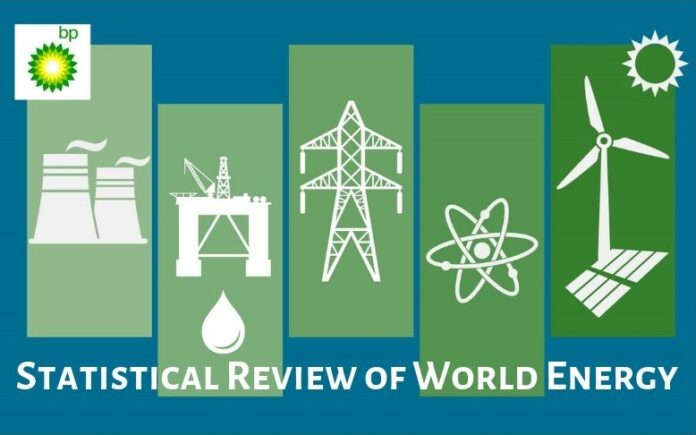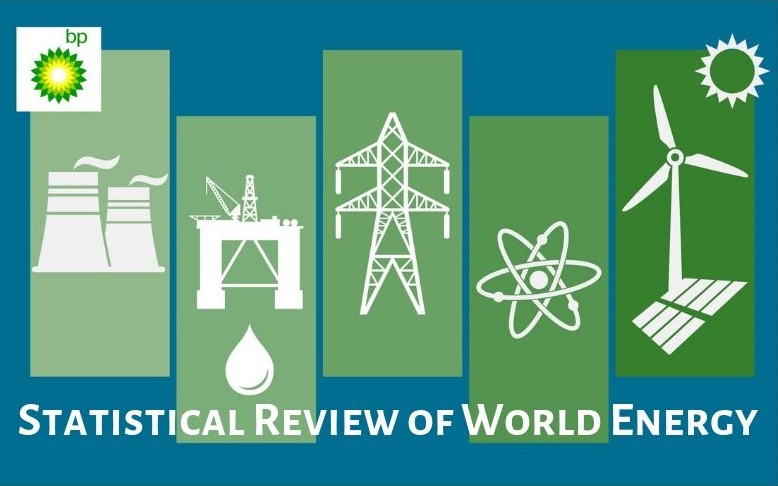
(www.MaritimeCyprus.com) You know things are really bad when the oil companies are also scared about the state of the world’s environment. BP is very worried about it as they made abundantly clear in this year’s edition of the Statistical Review of World Energy.
Â
Global primary energy consumption grew rapidly in 2018, led by natural gas and renewables. Nevertheless, carbon emissions rose at their highest rate for seven years.
Energy developments
- Primary energy consumption grew at a rate of 2.9% last year, almost double its 10-year average of 1.5% per year, and the fastest since 2010.
- By fuel, energy consumption growth was driven by natural gas, which contributed more than 40% of the increase. All fuels grew faster than their 10-year averages, apart from renewables, although renewables still accounted for the second largest increment to energy growth.
- China, the US and India together accounted for more than two thirds of the global increase in energy demand, with US consumption expanding at its fastest rate for 30 years.
Carbon emissions
- Carbon emissions grew by 2.0%, the fastest growth for seven years.
Oil
- The annual average oil price (Dated Brent) rose to $71.31 per barrel, up from $54.19/barrel in 2017.
- Oil consumption grew by an above-average 1.4 million barrels per day (b/d), or 1.5%. China (680,000 b/d) and the US (500,000 b/d) were the largest contributors to growth.
- Global oil production rose by 2.2 million b/d. Almost all of the net increase was accounted for by the US, with their growth in production (2.2 million b/d) a record for any country in any year. Elsewhere, production growth in Canada (410,000 b/d) and Saudi Arabia (390,000 b/d) was outweighed by declines in Venezuela (-580,000 b/d) and Iran (-310,000 b/d).
- Refinery throughput rose by 960,000 b/d, down from 1.5 million b/d in 2017. Nevertheless, average refinery utilization climbed to its highest level since 2007.
Natural gas
- Natural gas consumption rose by 195 billion cubic metres (bcm), or 5.3%, one of the fastest rates of growth since 1984. Growth in gas consumption was driven mainly by the US (78 bcm), supported by China (43 bcm), Russia (23 bcm) and Iran (16 bcm).
- Global natural gas production increased by 190 bcm, or 5.2%. Almost half of this came from the US (86 bcm), which (as with oil production) recorded the largest annual growth seen by any country in history. Russia (34 bcm), Iran (19 bcm) and Australia (17 bcm) were the next largest contributions to growth.
- Growth in inter-regional natural gas trade was 39 bcm or 4.3%, more than double the 10-year average, driven largely by continuing rapid expansion in liquefied natural gas (LNG).
- LNG supply growth came mainly from Australia (15 bcm), the US (11 bcm) and Russia (9 bcm). China accounted for around half of the increase in imports (21 bcm).
Coal
- Coal consumption grew by 1.4%, double its 10-year average growth.
- Consumption growth was led by India (36 mtoe) and China (16 mtoe). OECD demand fell to its lowest level since 1975.
- Coal’s share in primary energy fell to 27.2%, its lowest in fifteen years.
- Global coal production rose by 162 mtoe, or 4.3%. China (82 mtoe) and Indonesia (51 mtoe) provided the largest increments.
Renewables, hydro and nuclear
- Renewable power grew by 14.5%, slightly below its historical average, although its increase in energy terms (71 mtoe) was close to the record-breaking increase of 2017.
- Solar generation grew by 30 mtoe, just below the increase in wind (32 mtoe), and provided more than 40% of renewables growth.
- By country, China was again the largest contributor to renewables growth (32 mtoe), surpassing growth in the entire OECD (26 mtoe).
- Hydroelectric generation increased by an above-average 3.1%, with European generation rebounding by 9.8% (12.9 mtoe), almost offsetting its steep decline in the previous year.
- Nuclear generation rose by 2.4%, its fastest growth since 2010. China (10 mtoe) contributed almost three quarters of global growth, with Japan (5 mtoe) the second largest increase.
Electricity
- Electricity generation rose by an above-average 3.7%, buoyed by China (which accounted for more than half of the growth), India and the US.
- Renewables accounted for a third of the net increase in power generation, followed closely by coal (31%) and then natural gas (25%).
- The share of renewables in power generation increased from 8.4% to 9.3%. Coal still accounted for the largest share of power generation at 38%.
Key minerals
- Cobalt and Lithium production rose by 13.9% and 17.6% respectively, both well in excess of their 10-year average growth rates.
- Cobalt prices rose 30% to their highest levels since 2008, while Lithium carbonate prices increased by 21% to new highs.
For even more details, click on below image to download full report:
Source: BP
[Total: 1]














